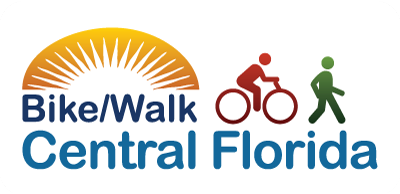
Last week, The Governors Highway Safety Association put out a report showing that the United States had a 35 percent increase in recorded pedestrian deaths — the highest in three decades. It showed more than 6,200 pedestrians were killed on U.S. roads last year.
The report combed through preliminary crash data from across the country and found that five states accounted for nearly half of those 2018 deaths: California, Florida, Texas, Georgia and Arizona.

The last time pedestrian deaths were this high was in 1990, when more than 6,400 pedestrians were killed.
The report suggested several reasons for the dramatic increase, including: more people walking to work, growing populations in cities, lower gas prices, more distracted drivers on the roads and more miles driven each trip. The report also suggests SUVs as a potential factor; the number of pedestrian fatalities involving SUVs has gone up 50 percent in the last five years.
What this means for Central Florida
According to GHSA’s report, Florida had the second-highest number of pedestrian fatalities at 330, behind California. In January, a separate study ranked Central Florida as the number one most dangerous place for pedestrians. The Dangerous By Design report highlighted how Florida’s infrastructure was built to accommodate cars, not pedestrians. Roads were designed to move lots of cars, very quickly, but that doesn’t always make for a safe trip if a person is walking.
Florida will continue to earn a reputation as a dangerous city for pedestrians and bicyclists, until measurable change happens.

How do we help?
Bike/Walk Central Florida is part of a coalition called Best Foot Forward for Pedestrian Safety. The group’s goal is making the streets safer for people who walk. When the coalition was created in 2012, the goal was to lower the number of pedestrian deaths. We started with crosswalks.
The reasoning is: if more cars stop for people using crosswalks, then more people will make the effort to use crosswalks, knowing they will be safer.
We sent out data collectors to look at so-called “driver yield rates,” then we teamed up with local law enforcement for some high-visibility Crosswalk Crackdowns—also knowns as Operation BFF. An undercover officer will cross a street, then radio to his or her team which drivers don’t stop. Those drivers get an expensive ticket, and hopefully learn their lesson.
Since our initial launch in Orange County and Orlando, we’ve expanded into Osceola County and are currently planning to launch BFF in Seminole County later this year. BFF data shows significant increases in driver yield rates at targeted crosswalks.
Another way BFF is working to change behaviors is through education programs at elementary schools.
In 2001, the University of Miami released a program called “WalkSafe,” which is taught in elementary art and P.E. classes. Initial data shows this program can really make a difference. Orange County Public Schools has officially approved the program for K-2 students, and BFF’s goal is now to have it mandatory for K-5 students in Orange County.

